After the first two days of hard work, I was already feeling kind of burnt out by the start of GUADEC. This year I was only vaguely involved with the organization, way less than the 2016 and obviously 2014 instances of the event, so I could afford to stand back a bit and enjoy the conference like a regular attendee. The only help I provided was by volunteering to record some of the videos and that simply means attending talks, which I planned to do anyway.
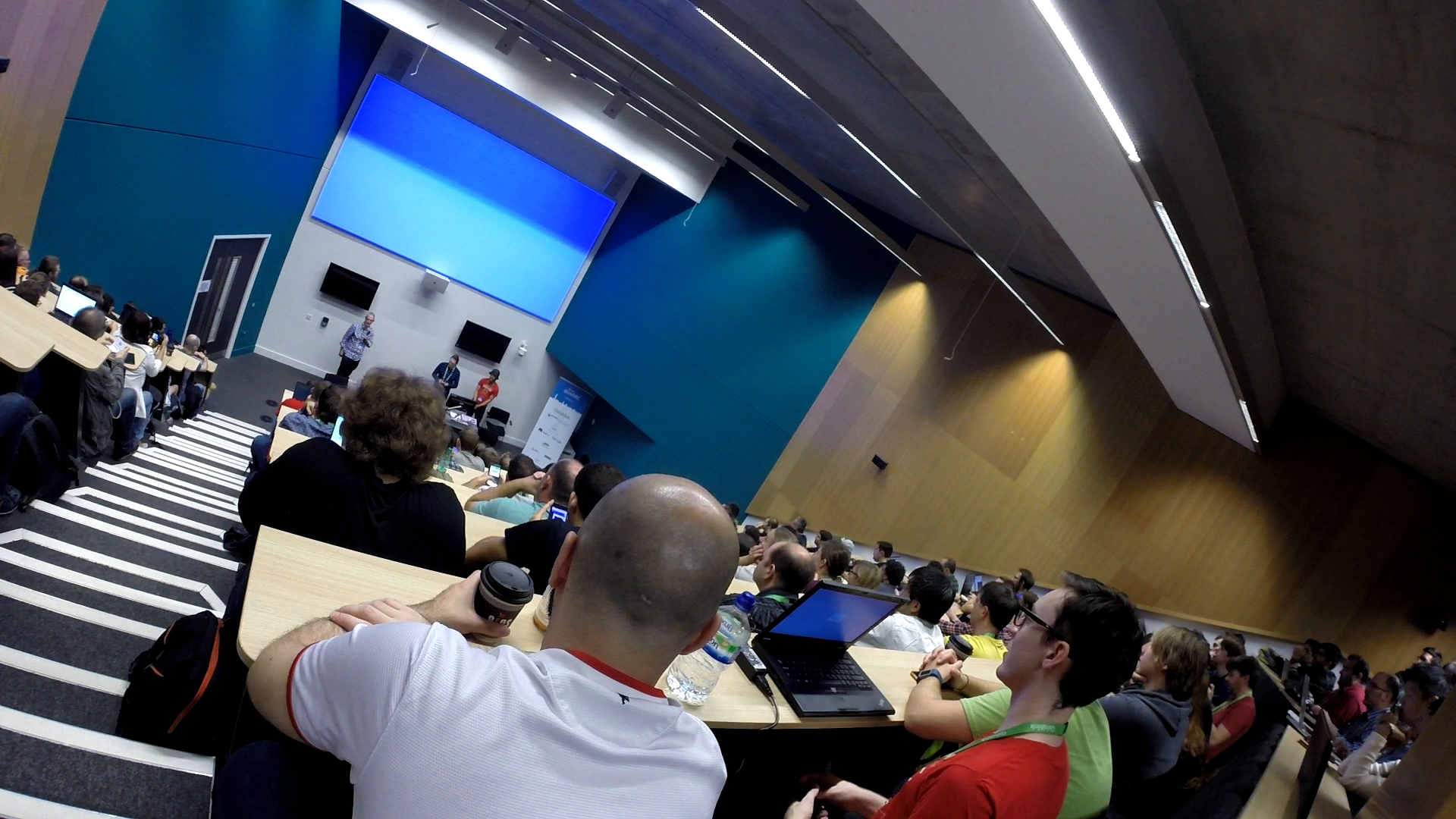
During the opening we were told about an ongoing game for the duration of the conference. Attendees had been secretly assigned to four different houses and could be rewarded with points for asking questions during talks or on other such occasions. I learnt that I had been designated as Turquoise House lead. My guess was that meant I had been officially stamped as an old fart and sure enough, I was handed my “Old farts club” sticker by Bastien a bit later.
By the way, did you know you can adopt me?
Talks I attended
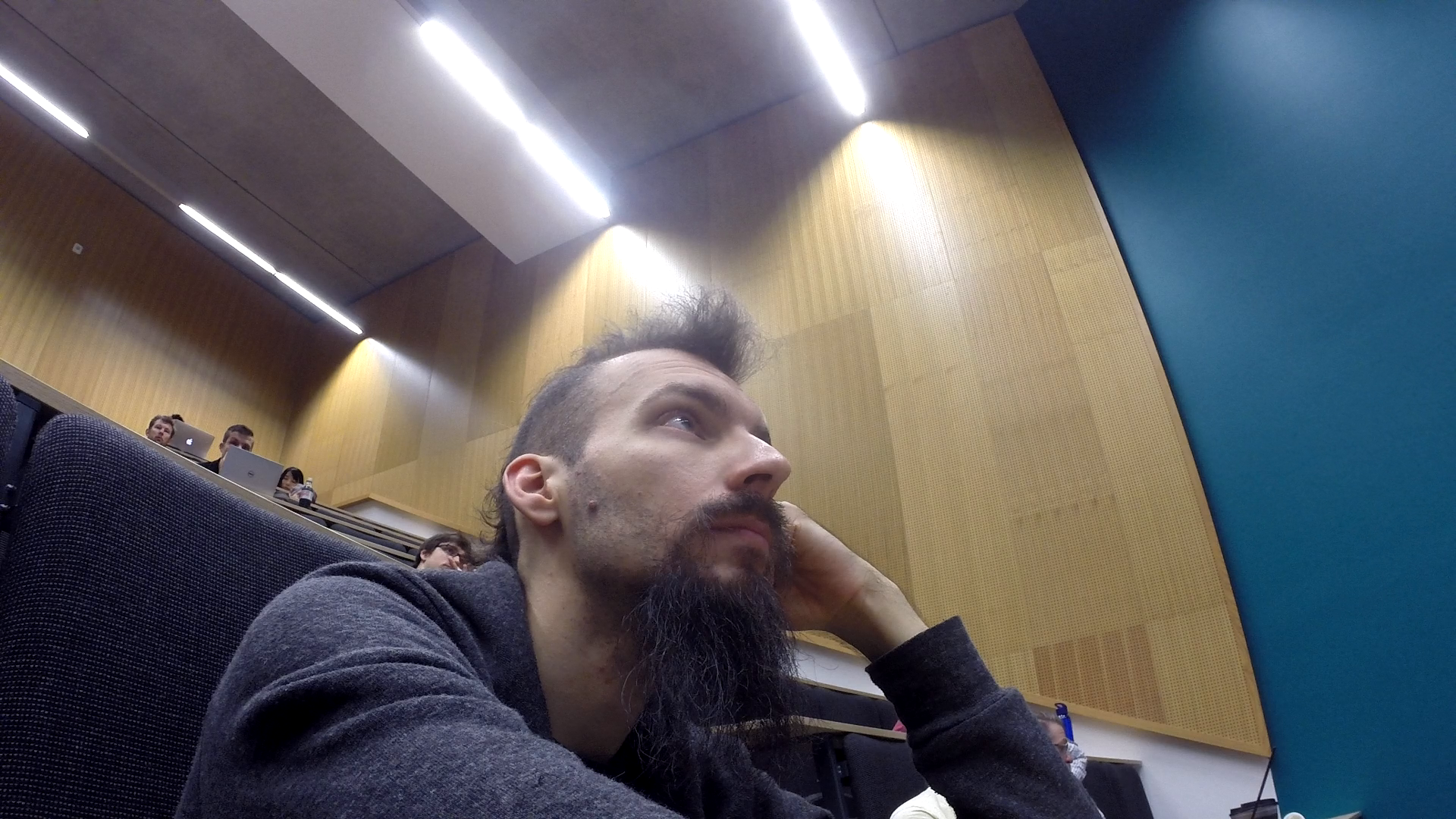
Michael asked us to “Please use GNOME Web”. I have to confess I am only using it part time and I am very slowly converting from Firefox. I like my overall experience with Web more, but it’s not up to the task for everything yet. My main blockers for now are the lack of WebRTC support (which is coming… eventually), the way large numbers of tabs are handled (I have almost 400 tabs currently open in my Firefox window, neatly separated with Tab groups/Panorama extension), and the ease with which I can remove noise from my history via the address bar (when a non relevant suggestion like diff views of a wiki page or old blog articles shows up I can just highlight it and press the Del key). We’re getting there though!
Christian told us about the “State of the Builder”.
No big surprise for me here as I follow development quite closely, building and using master regularly and of course hanging out with the development team in the chatroom.
It was nice seeing the reactions from the audience though.
In her keynote, Karen explored the way we fight “The battle over our technology”. My main takeaway was that we all have our personal reasons to fight for free software and we should each take some time to think about what those are to find more energy to keep fighting.
In “Progressive Web Apps: an opportunity for GNOME”, Stephen explained how with a few tweaks in Epiphany we could get said PWA integrated and feel more at home in our environment. Michael was in the audience and reacted positively. The two will probably be working together in the near future to make this happen. This echoes with Michael saying hacking on Epiphany was relatively easy, and with the friendliness to newcomers we claim.
The “Atomic workstation” presentation by Kalev gave details on their plan and current status for the post-distro world Owen already hinted at last year. I like how he showed GNOME Software integration and said:
For people who have been using GNOME Software, it doesn’t look anything special… and that’s the whole idea.
The timeline for it to be production ready seems quite long, but it’s good to see progress happening.
Day 2 started with Martin’s “Fantastic layouts and where to find them”. He demonstrated Emeus and constraints based layout for user interfaces. I discovered Apple’s Visual Format Language (one of the two ways to defined constraints with Emeus) and was quite impressed by it. I am looking forward to seeing how having that in GTK+ 4 will spark new designs in upcoming applications, and how this will help achieve responsive design in desktop applications.
Although the GNOME part of Michael’s “LibreOffice and GNOME” was smaller than I expected, it was good to see the current state of LibreOffice Online and I’m looking forward to having it integrated with the GNOME Nextcloud instance.
Despite being under the weather and the hardware throwing a tantrum, Matthew did a good job at introducing the audience to “Decentralised open communication with Matrix.org”. Matrix has replaced Jabber and IRC for me since early June and I’m very happy with it.
As GNOME turns 20, Jonathan recounted “The History of GNOME”. This hour long talk felt too short! Even for someone who’s been around in the community, there were gems one may not have known about. I am very thankful this was put together and I had a great time. The fact that he didn’t talk about it conforted me in knowing that there is no Swedish conspiracy. The most important milestone to me was the release of GNOME 1.4 as that’s when we established one of our core traditions:
From here on out, GNOME only removes features.
Not convinced? Just read our release notes!
That history lesson was followed by Neil’s forecast. Our recently hired Executive director shared his vision for “GNOME to 2020 and beyond”.
We took a quick break and came back for the Foundation’s Annual General Meeting.
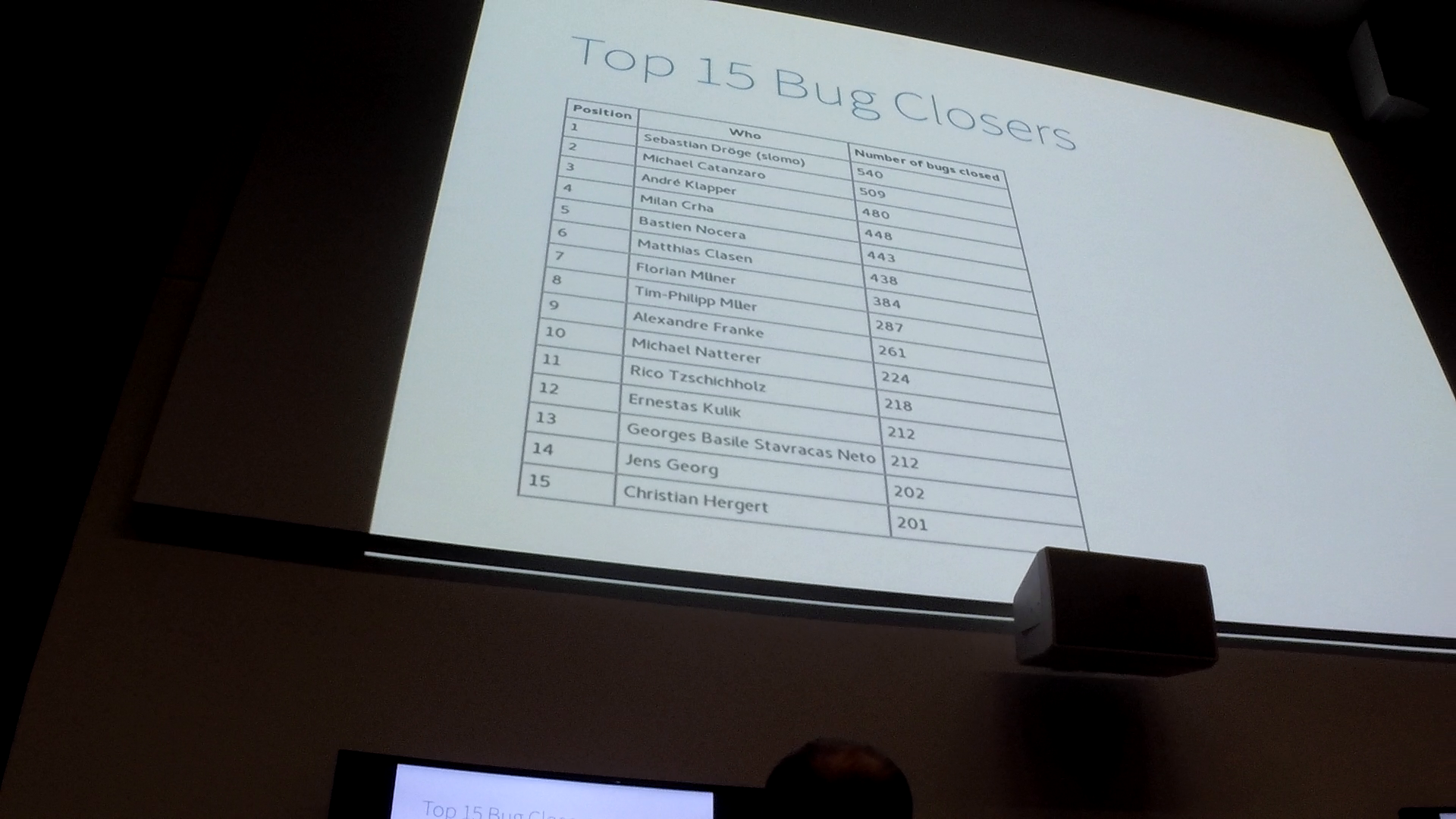
We had our usual team reports, I gave the translation one.
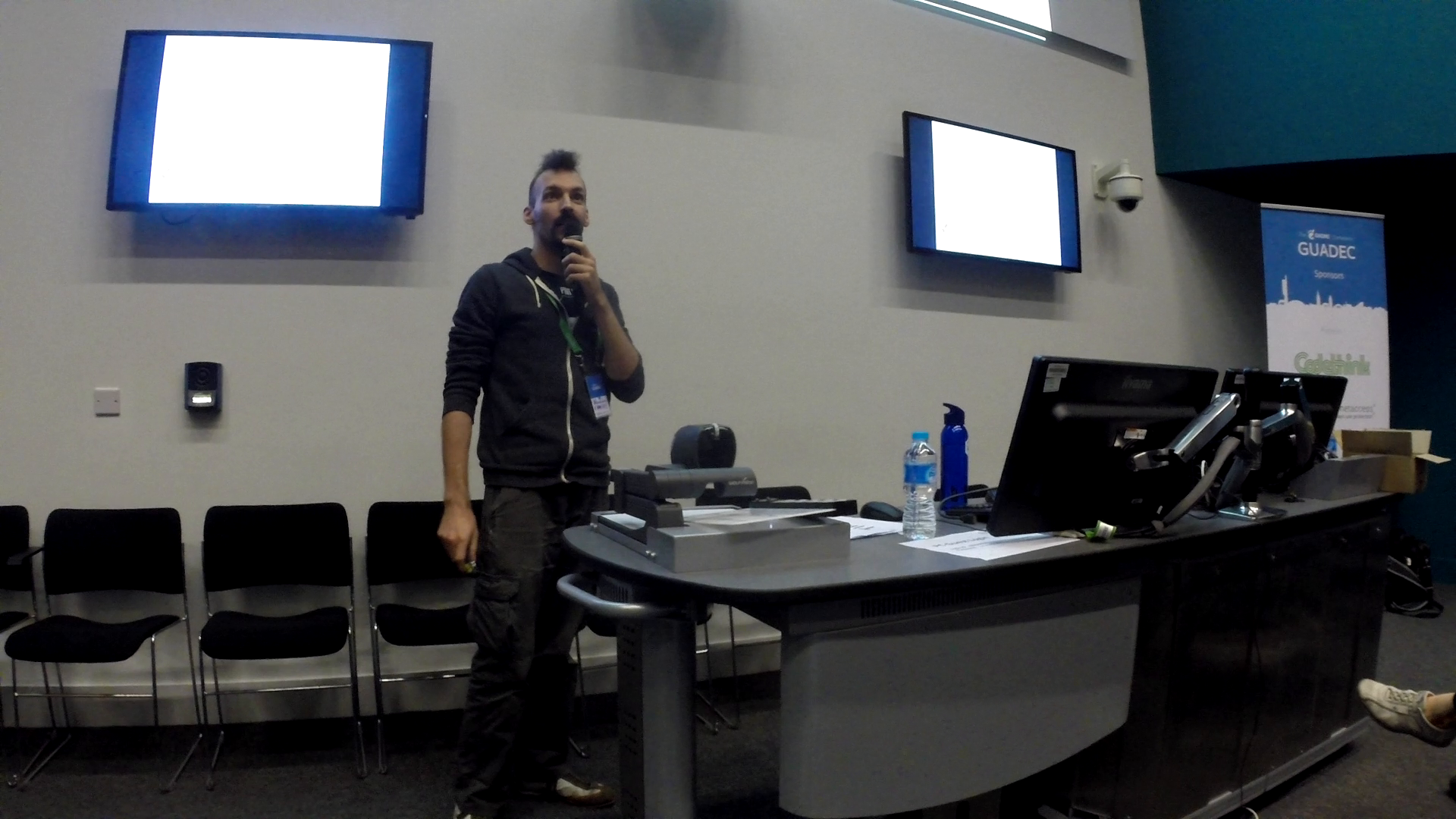
Then we went out to shoot the traditional group photo.
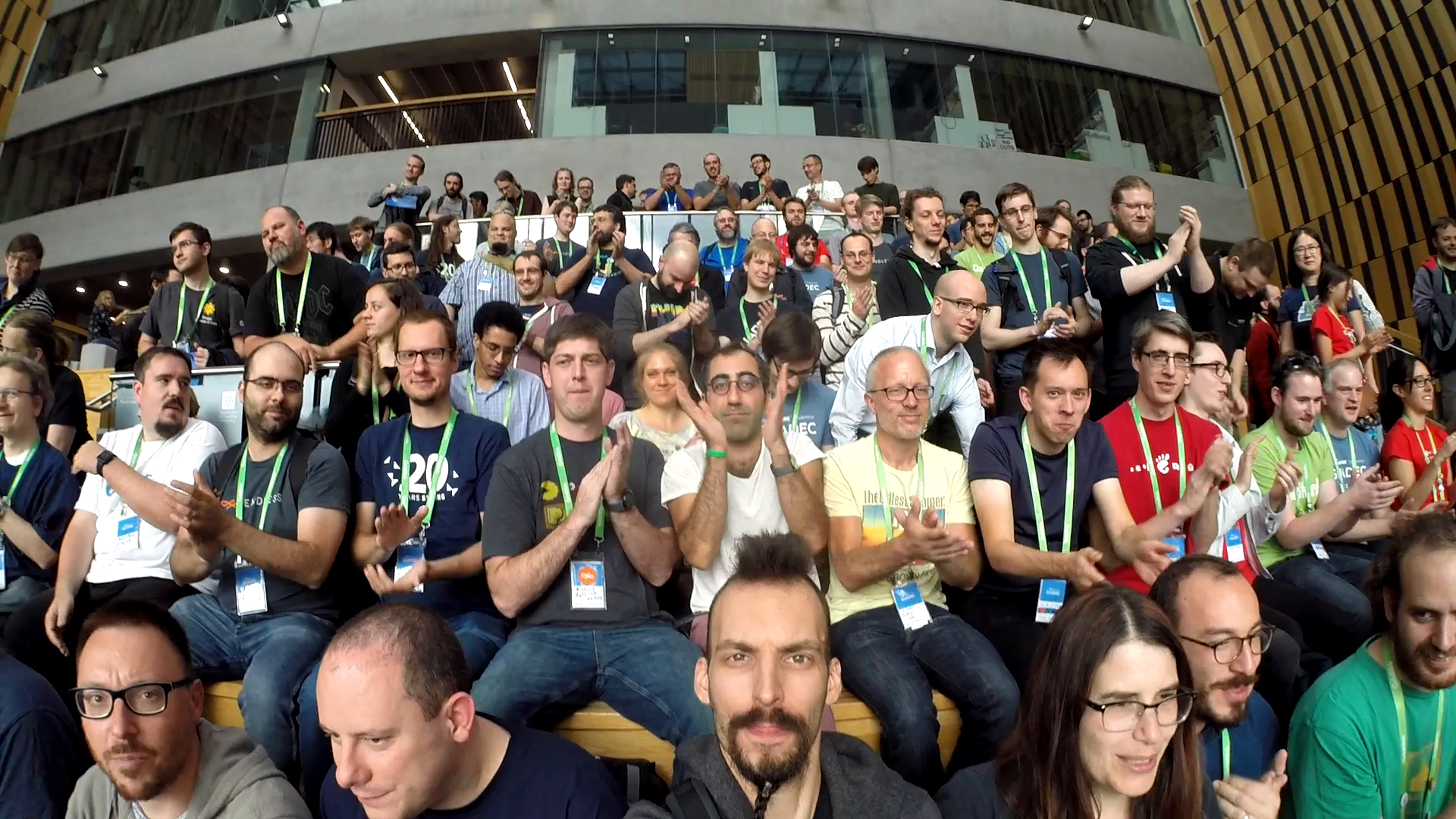
And it was time for a Q&A session with the Board.
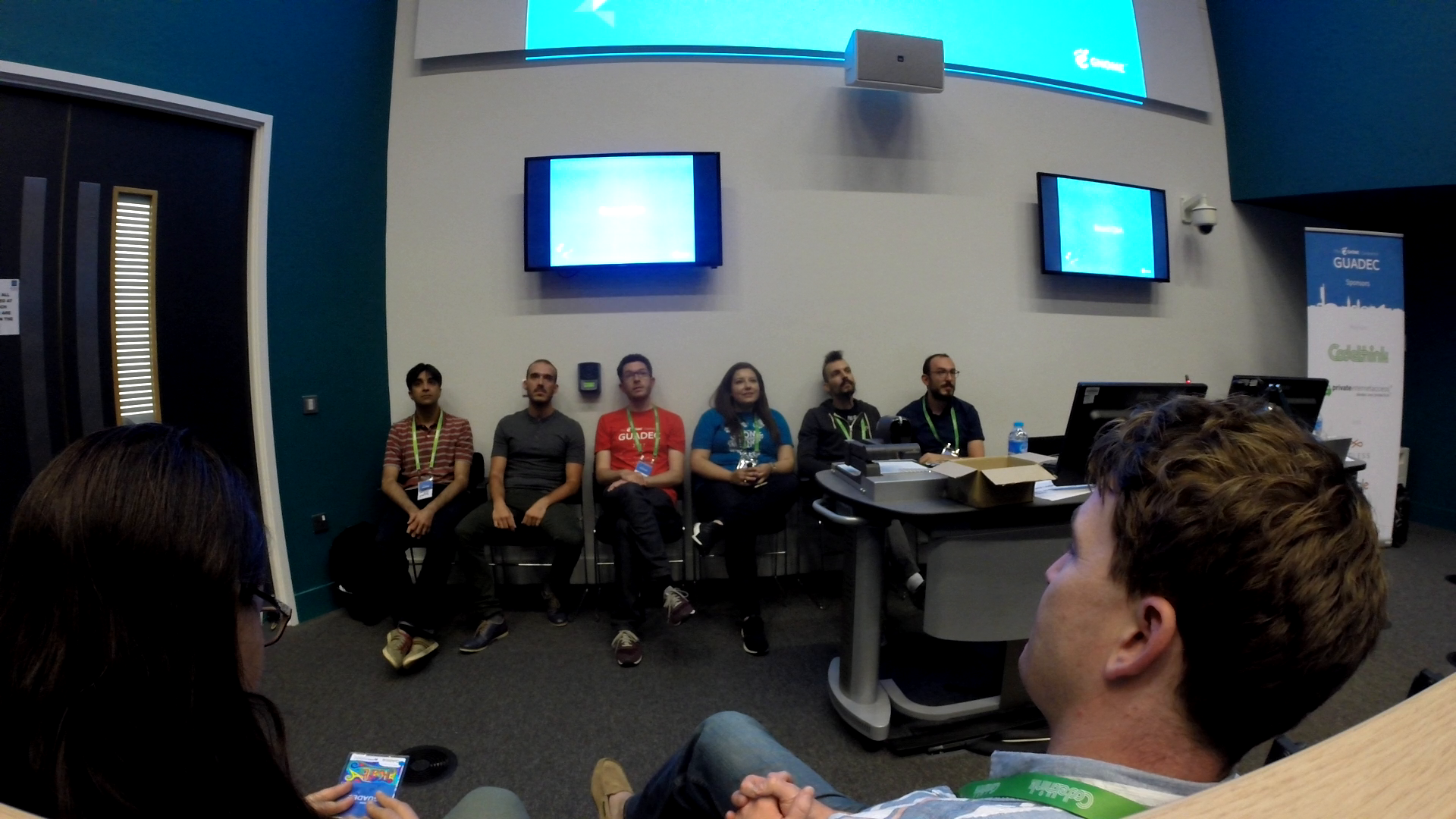
No talk for me on the morning of day 3 which I spent here and there, talking to various people about various things.
I went to the session where our transition to GitLab was discussed. I feel good about the direction this is taking and the way GitLab treats communities like ours.
The open talk about Pipewire by Wim was quite short. I’m not sure what to think of it yet, I guess I’ll have to wait and see.
“How to get better mileage out of Glade” is a question I’ve been asking myself from time to time, so I was glad that Juan Pablo talked about it. He’s done some good work to make it more modern and the future looks bright. I need to spend some time playing with it.
The lightning talks were good and covered lots of topics. My favorite ones are the ones that could be deemed off-topic, like Kat’s about keeping chickens, or the one where Neil fights Zeeshan’s helicopters with his airplanes. I wish we had more. I would actually enjoy attending a day full of lightning talks!